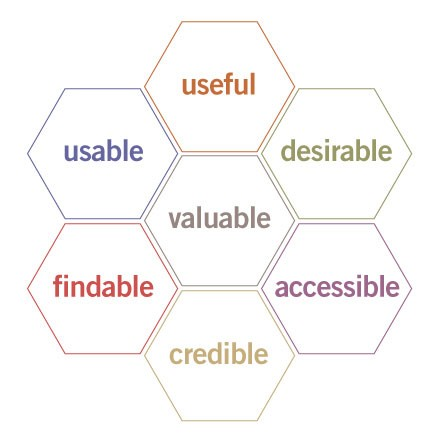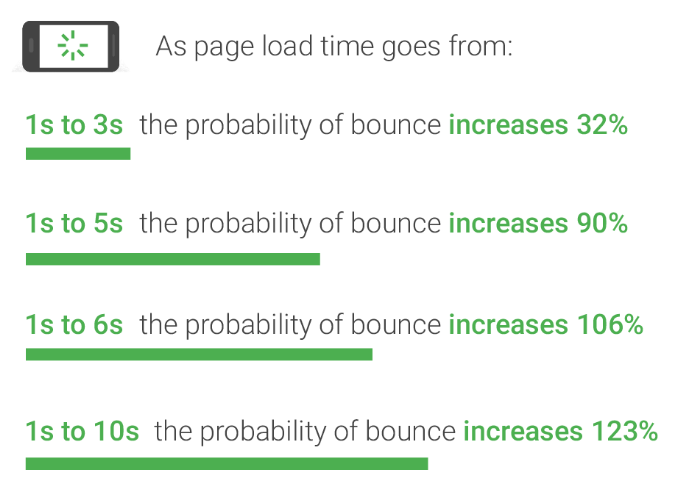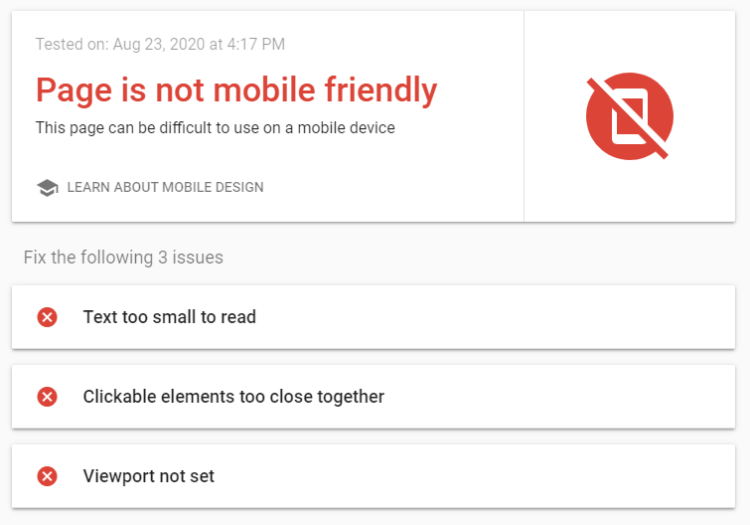How Does UX Affect SEO?

Over the last decade, SEO has changed dramatically. For years, people have mistakenly thought that in SEO only rankings or link building count. They couldn’t be more wrong! Currently, Google’s algorithms are far more sophisticated and user-oriented than ever before and this makes UX also one of the factors contributing to positions in the search results.
In this article, I will show you why you should take care of user experience to achieve great success with your SEO. It is time to discover how to make UX and SEO work together!
What is User Experience?
User experience (UX) refers to users’ emotions, attitudes, and interactions with a certain website, product or service. The goal of user experience design is to create a digital product that is as accessible, easy-to-navigate, and engaging as possible. With a user-oriented web interface, using a given product, website or mobile application is much more pleasant and convenient which consequently translates into higher traffic, conversion rate, and sales.
User Experience Honeycomb
Peter Morville, one of the pioneering user experience designers, has introduced the user experience honeycomb, which presents all the key elements of a successful digital product.

Here are the most important qualities of the user experience proposed by Peter Morville:
- useful – the digital project should respond to users’ needs, the product itself does not make much sense if it does not meet users’ expectations and requirements,
- usable – it should be understandable to all users and designed in an easy to use and simple way,
- findable – all the information the user needs should be easy to find, therefore it is important to provide easy navigation,
- credible – your brand and the products or services you offer should be reliable and trustworthy,
- accessible – your website or mobile application should be designed in a way that it is accessible to all users,
- desirable – this quality refers to the visual aspect of the digital product, make sure that the design is appealing, attractive and to the point,
- valuable – the sum of all the qualities described above.
Taking care of all these qualities guarantees a better user experience and a greater chance of success. Does your website meet all of them?
Page Experience and Google algorithm
Users simply love websites providing an excellent page experience… and Google noticed that! This is why at the end of May 2020 it was announced that page experience will start to be one of the key ranking factors from 2021. What does this mean in practice? If users perceive negatively the interaction with your website, Google will consider it to be of poor quality and as a result, you will suffer a drop in the search results.
The most crucial page experience signals which will have a huge impact on ranking include:
- Core Web Vitals– a set of measures focusing on three aspects of user experience:
- loading → Largest Contentful Paint (LCP),
- interactivity → First Input Delay (FID),
- visual stability → Cumulative Layout Shift (CLS),
- mobile-friendly – a website should be optimized for mobile devices,
- safe-browsing – a website should not contain malicious content,
- HTTPS – this protocol should be properly implemented as it provides a secure connection to the website,
- no intrusive interstitials – content should be easily accessible to all users and not hidden behind pop-ups.
So, as you can see, from next year, user experience and SEO will be even more connected than they are now. If you have ignored UX so far, it’s time to change that. How? Below, I will give you a hint as to which factors you should pay attention to and improve in the first place.
The Most Important User Engagement Metrics
Have you ever heard of RankBrain? It is an algorithm introduced in 2015 which, owing to artificial intelligence, analyses users’ behavior, intent, and engagement and on this basis evaluates the quality of websites. RankBrain is constantly being developed to learn users’ behavior in order to be able to best adapt search results to their preferences. This highly sophisticated algorithm takes many factors into account, and here are the ones indicating user engagement:
- Bounce rate – is the percentage of all users who quickly left the site without visiting other pages, a high level of bounce rate is mostly perceived as negative by the search engine, you can check it in Google Analytics report (I recommend an article on our blog from which you will discover how to reduce bounce rate);
- Page Dwell Time (or: time on site) – is the time users spend on your website, the rule is simple: the greater the dwell time, the higher the user engagement, if users spend relatively much time on your website, it is a signal to Google that your website and content is of high quality and meets users’ needs,
- Click-through rate (CTR) – is the ratio of clicks on a page to all impressions, this metrics is often used to determine the effectiveness of an online advertising campaign,
- Repeated search – although this is not directly related to the user experience, however, a high rate of repeated search indicates that a user failed to find an answer on your site and therefore had to repeat his/her query and search for it again; repeated search suggests that your website may be irrelevant.
How to Improve SEO with UX? 5 Basic Steps
1. Mobile Friendliness
More and more users around the world visit websites from mobile devices – in July 2020 almost 51% of the worldwide web traffic came from mobiles (source: gs.statcounter.com). So if your website is not optimized for mobiles, you lose a huge opportunity to increase traffic and conversion rates.
Keep in mind that your website should be mobile responsive, if you ignore this aspect, then the frustrated users may quickly leave the site and never come back. And that’s definitely not what you want!
If you want to quickly discover if your website is mobile-friendly, choose a tool developed by Google: Mobile-Friendly Test. Enter the URL and within a few seconds, this tool will generate a report from which you will find out which elements need to be improved to make your website more mobile-friendly.
If you see this, it’s a sign that you need to work on a version of your website for mobiles. Don’t lose valuable mobile traffic anymore!
2. Website Speed
Slow page loading is definitely one of the key factors annoying users and increasing the bounce rate. The longer your site loads, the higher the risk that users simply give up and leave your site. You don’t believe me? Then take a look at the Google study.

Users have no patience and will simply give up after a few seconds. The problem of too slow page loading mainly involves mobile devices – usually, pages on desktops have higher speed (which, of course, is not the rule).
I suggest you improve your website speed as soon as possible as it has a negative effect not only on user experience but is also one of Google’s ranking factors. If you don’t know where to begin, then take a look at my article in which I explain exactly how to improve website speed and which tools will come in handy.
3. Website Security
Users want to feel secure, that’s why they really value websites that make sure their personal data (and let’s face it, each day we share a lot of data on the Internet) is protected against leakage. If you show your visitors that both your business and your website are credible and reputable, they are more likely to interact with you and it will further build customer trust in your brand.
Website security is also a ranking signal, Google penalizes sites that are not secure, reliable, and trustworthy.
If you want to improve site security and build customer trust, start with:
- SSL (Secure Socket Layer) and HTTPS (Hypertext Transfer Protocol Secure) – ensure end-to-end data encryption between client and server,
- admin security – provide login data only to people who really need it, this will reduce the risk of hacking attacks and data leakage,
- removing broken links – if internal and external links on your website lead to pages that no longer exist, this significantly lowers user confidence.
4. URL Structure
The right URL structure has a huge impact on both user experience and Google crawlers. Your users definitely want to know exactly which page they currently visit and URLs like that don’t help them:
Can you guess what this page is about? I guess not. It will be much easier to tell when the URL looks like this:
This time, based on the URL, you can say that this page is about the website’s position in Google. So maybe it’s an article?
The example above perfectly illustrates that the appropriate URL structure can make it easier for users to get a better orientation on a website. What’s more, Google also values user-friendly URLs and ranks higher websites that contain keywords in their URLs.
5. Site Navigation
Is the navigation on your website intuitive and clear? Does it make it difficult for your users to find out where to click to reach the desired page? Adequate website navigation can improve the user experience and, on the contrary, if the navigation is completely non-intuitive and for that reason, visitors are unable to find what they are looking for, then such a website will receive negative feedback from them.
But navigation does so much more – it instructs Google crawlers how a given page should be indexed.
So what should you do to improve web navigation?
- plan your website architecture – create a sitemap which contains all the most important elements in the right hierarchy,
- use user-friendly language – don’t try to be over creative with your copywriting, give users clear and easy to understand messages,
- add a link to the logo – this way, users can easily return to the home page,
- follow web conventions – non-conventional menu may make it difficult for users to navigate,
- provide a clear heading structure – not only does the visual structure of the website matter, but so does the contents, so put your headings in the right hierarchy.
UX + SEO = Win
For years now, UX and SEO have been going hand in hand, so you should never ignore user experience when planning SEO strategies. Google’s algorithms are becoming more and more user-centered and strive to respond to users’ needs and expectations which is proven by the recent announcement of the page experience algorithm that is planned to be introduced in 2021. Focusing on user experience will successfully enhance user engagement metrics, which will result in a higher ranking in the search results. So believe me: all this is worth the effort!
If you need a professional user-oriented SEO campaign, feel free to contact us! Our SEO experts will certainly guide you on which elements need to be optimized so that both Google and users will love your website. Just remember: UX and SEO is definitely a winning combination!




Nice article. However, personally I don’t even thing of these two things seperately – for me UX is a part of optimizing a website and so is SEO. They work for the same, boosting conversion/ attracting more leads and traffic, etc.